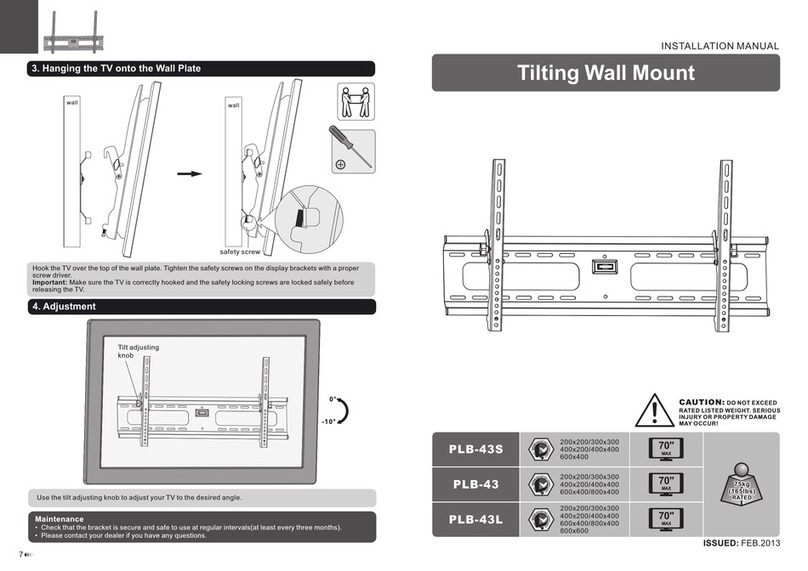
6
INTRODUCTION
The 1600 German equatorial was designed to meet the needs of the advanced observer who requires a mount with
maximum strength and rigidity and minimum weight. The excess material in both axes has been carved out while retaining
a heavily ribbed structure for internal strength and rigidity. A unique dovetail was machined into the mating surfaces of
the R.A. and Dec. axes and also between the Dec. axis and the Dec. axis Top Plate. This feature allows quick and easy
assembly in the eld without any tools.
The DC servo motor drive with GTO computer system, the optional keypad with its digital display screen, and the included
AP V2 ASCOM Driver, PulseGuide™ and PEMPro™ v.3.x software all combine to offer extraordinary sophistication
for today’s observer. Whether you enjoy visual astronomy exclusively or plan an aggressive astrophotography or CCD
imaging program, this mount will allow you to maximize your night out under the stars.
The advanced keypad features allow you to slew automatically to objects in a wide range of databases as well as any R.A./
Dec. or Alt./Az. coordinate. A large selection of common names for stars and other objects makes your selection a snap.
The rapid slew rate of 5 degrees per second (1200x) allows you to locate objects very quickly and accurately. You will be
very pleased with the intuitive operation of this keypad. There are no complicated sequences of keystrokes to remember.
It is so easy to use that even if you don’t use it for a few months, you will feel at home with the keypad very quickly.
The keypad is only one way of controlling the versatile Astro-Physics GTO Servo System. From its very conception, the
servo controller was designed to work with any software that was written to use our published command set. We do not
lock you into any proprietary software or mandatory “additional” equipment. To increase the versatility of all our mounts,
we have developed and now fully support a V2 ASCOM Driver for use with all ASCOM client software.
As mentioned above, we also include PulseGuide™ mount control / utility software and a full version of PEMPro™
(Periodic Error Management Professional) v.3.x (latest version) for you to enhance your control and performance options.
As an added bonus, all 1600GTO mounts will come pre-loaded with the custom-tted PEMPro™ corrections from our
extensive individual testing that is performed on each and every mount. While the native periodic error of your 1600GTO
will be 5 arcseconds or less, you can reduce it even further to maximize performance without auto-guiding. These software
control products are detailed later in the manual.
In addition to everything outlined above, the 1600GTO’s control and performance options will be greatly enhanced by
the Astro-Physics Command Center (APCC). APCC fully addresses all the capabilities of the 1600GTO, and adds
enhancements not currently available in the keypad or in any other software.
The 1600 is equally at home in a permanent observatory or as a portable mounting for remote star parties thanks to the
ease with which the two axes come apart. This is the perfect
mount for a large refractor, Newtonian, Cassegrain or
astrograph.
In order to maximize your pleasure on your rst night out, we
recommend that you familiarize yourself with the assembly
and basic operation of the mount indoors. The temperature
will be comfortable, the mosquitoes at bay, and you’ll have
enough light to see the illustrations and read the manual.
Please take particular note of counterbalancing, use of the
clutches and operation of the keypad controller.
Why Polar Alignment is Important
Polar alignment permits accurate R.A. movement in order to
compensate for the Earth’s rotation.
If you were to take a long exposure photograph with Polaris
(often called the north star) in the center of the eld, you
would discover that all stars seem to revolve around
Polaris. This effect is due to the rotation of the earth on
its axis. Motor-driven equatorial mounts were designed to
compensate for the earth’s rotation by moving the telescope
at the same rate and opposite to the earth’s rotation. When
the polar axis of the telescope is pointed at the celestial pole
(polar aligned) as shown in the diagram at right, the mount
will follow (track) the motions of the sun, moon, planets and
stars. As a result, the object that you are observing will
appear motionless as you observe through the eyepiece or
take astrophotos.
Equator
South North
Direction of
the Celestial
North Pole
Earth
Direction of
the Celestial
North Pole
Direction of
the Polar Axis
Horizon
Zenith
Earth’s Axis
L
a
t
i
t
u
d
e
L
a
t
i
t
u
d
e
Northern
Hemisphere
Earth’s Rotation
Mount’s
Counter-rotation


































